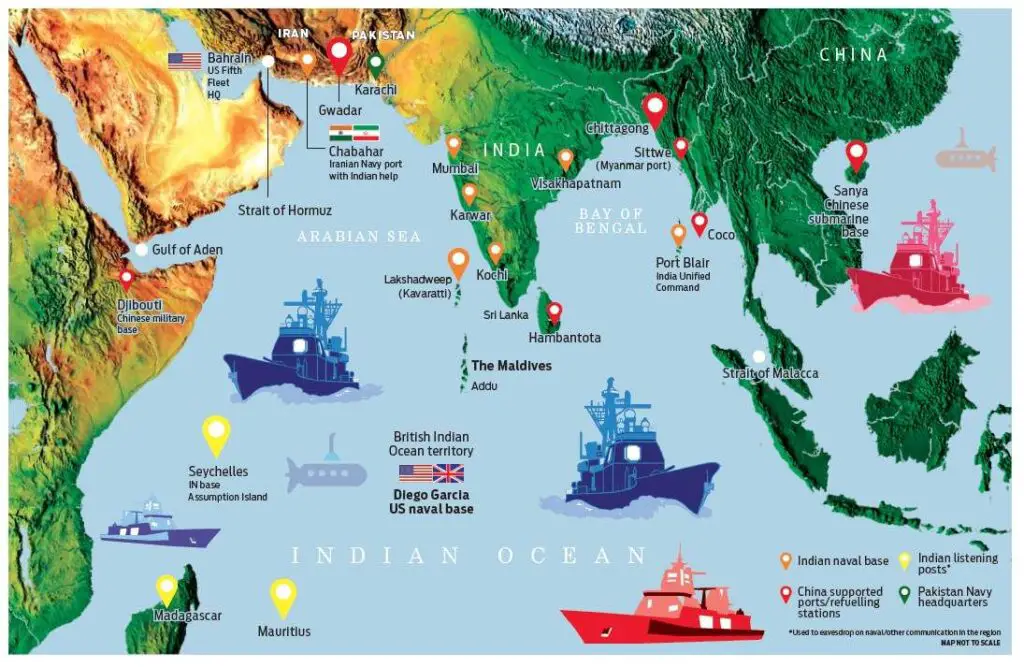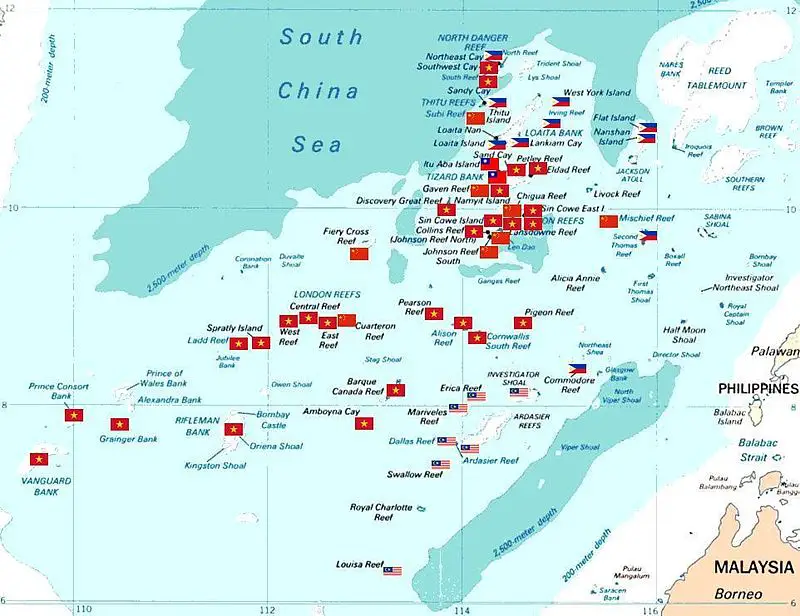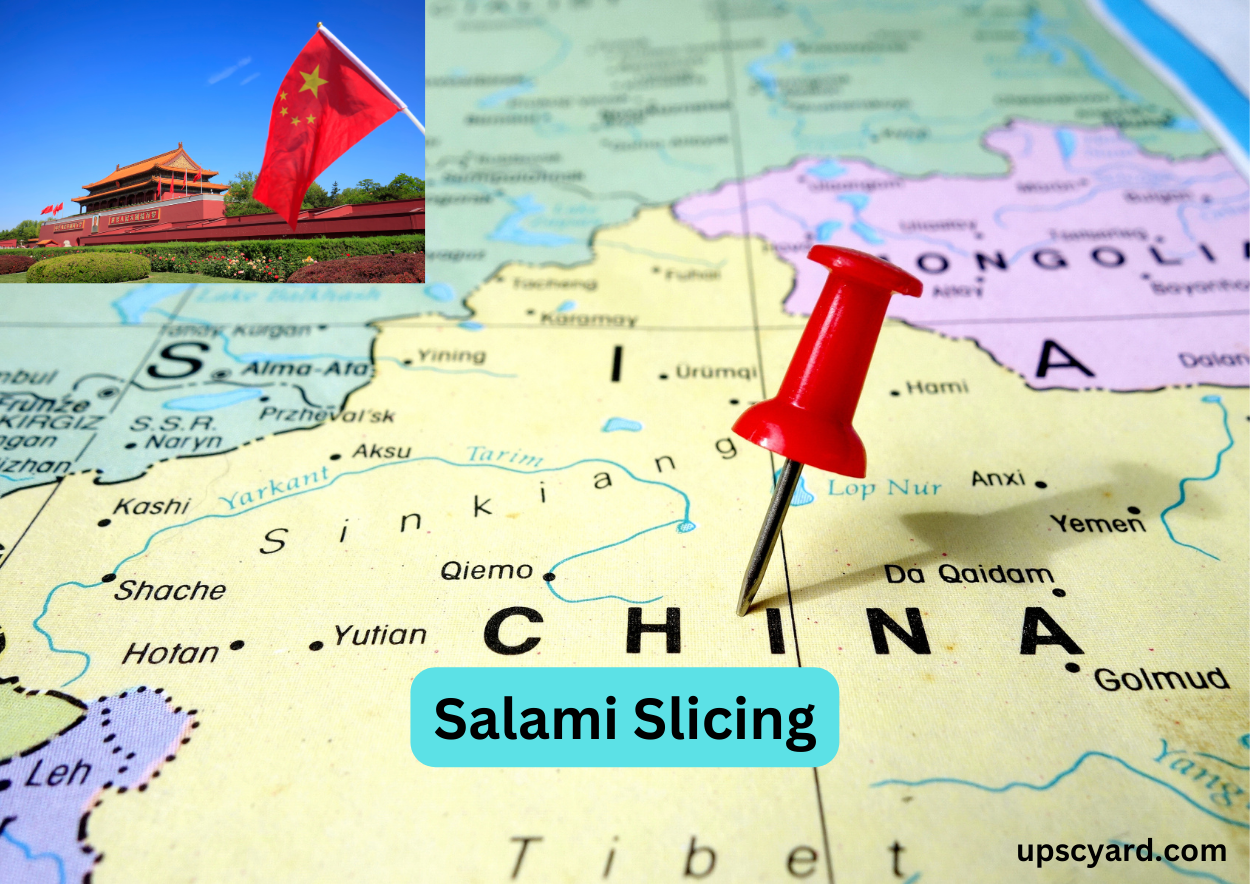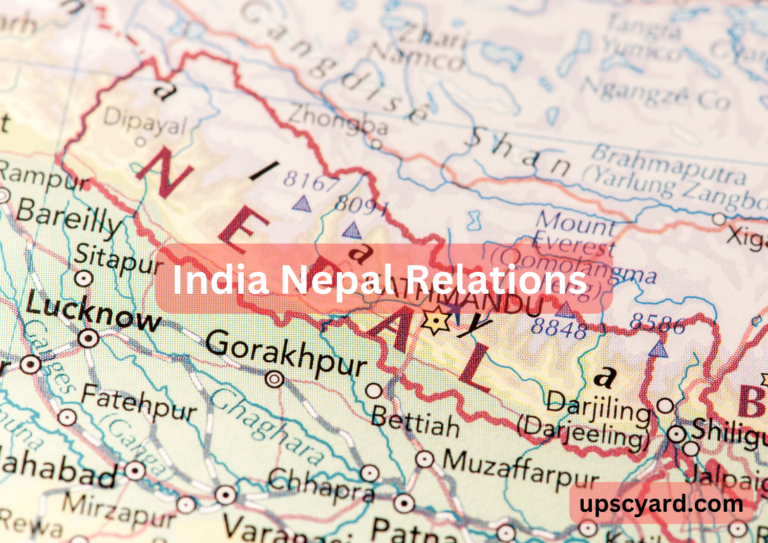Salami Slicing
The term “salami slicing” refers to a strategy where a long-term goal is gradually achieved through a series of small, incremental steps. In the context of India, it is often used to describe China’s perceived efforts to expand its territory and influence in the region.
One example of salami slicing in India is China’s construction of infrastructure, including roads and military installations, in disputed areas along the Line of Actual Control (LAC), which serves as the de facto border between India and China
General Bipin Rawat cautioned against China’s display of strength on Line of Actual Control

In what manner is China employing this strategy against India?
China stands as a unique case post-World War II, employing a systematic approach to territorial expansion through military means. Notable instances include Tibet and Xinjiang acquisition, Aksai Chin capture, and further acts of territorial assertiveness like the Paracel Islands (1974), Johnson Reef (1988), Mischief Reef (1995), and Scarborough Shoal (2012).

Salami slicing varies in its execution based on the region. For instance, in Ladakh, the People’s Republic of China introduced ethnic Han pastoralists, providing them cover to encroach upon unprotected areas along the Line of Actual Control. This process displaces Indian herders from their traditional pasturelands, creating opportunities for salami slicing. In the context of China, salami slicing denotes a strategy of territorial expansion in both the South China Sea and Himalayan regions.




